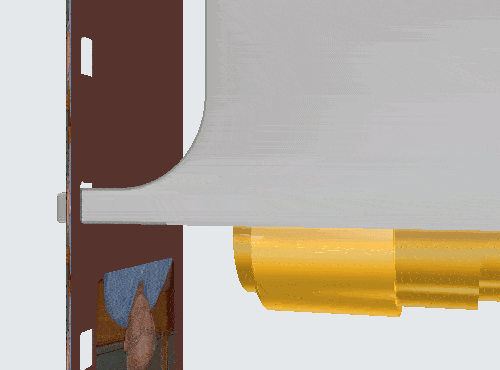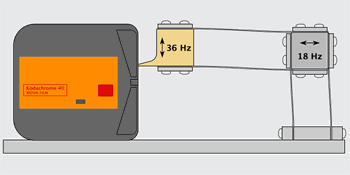Film Pulldown Claw
Film Pull-Down Claw
for movie cameras and projectors
This is a concept in 1977 by Steve Hines for a quiet film pull-down claw. The claw bounces vertically and horizontally at different rates to create a gentle start and stop, while providing the maximum speed during the film advance. This quiet pull-down technique is well suited for available-light sound movie cameras.
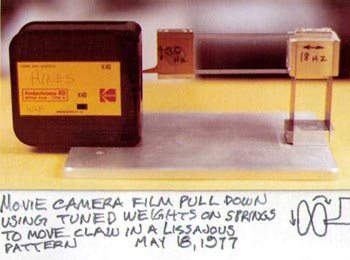 Lab notebook entry. Lab notebook entry. |
|
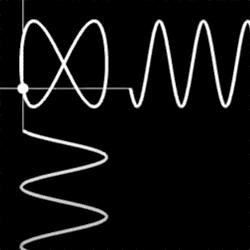 |
|
The film pull-down claw moves in a Lissajous pattern, created by the phase relationship of vibrating vertical and horizontal spring-steel parallelogram supports.
|
Duty Cycle
The quicker the film pulldown, the more time there is available for exposure.
In the 2:1-ratio version the pulldown occupies approximately 25% of the total path, requiring a 90° rotating dark shutter, therefore allowing for a 270° open shutter, for longer exposure than the typical 180° shutter-angle camera.
 |
 |
 |
| 2:1 ratio | 3:1 ratio | 4:1 ratio |
|
36Hz vertical 18Hz horiz. |
54Hz vertical 18Hz horiz. |
72Hz vertical 18Hz horiz. |
| ≈270° open shutter | ≈300° open shutter | ≈315° open shutter |
All patterns are based on the 18 Hz frame rate of Super 8 cameras. Other ratio Lissajous patterns can be tried to increase shutter exposure even further, with increasing risk of tearing the film.
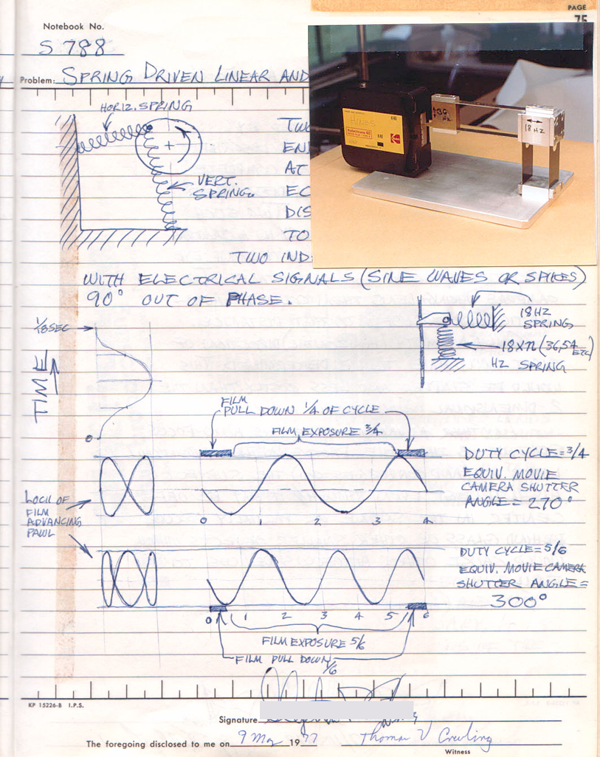
Hines’ Kodak Lab Notebook entry, March 9, 1977
Further development would include adding electromagnetic coils to keep the mechanism in motion.
For consulting, please contact Steve Hines at:

